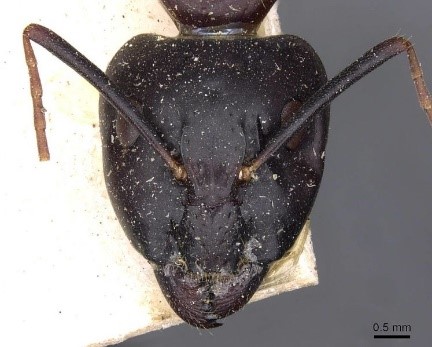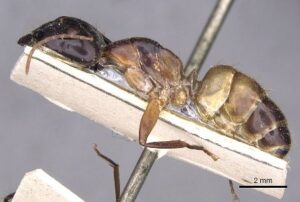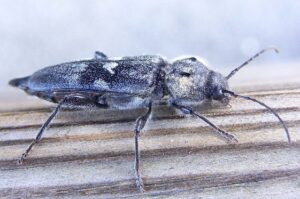Carpender Ant
General Description
| · There are 14 species of carpenter ants occurring in UAE. They have similar morphological characteristics. The more commonly associated with human habitation in UAE is Camponotus thoracicus (Fabricius)
· Carpenter ants have a one-segmented pedicel in the form of vertical scale. · Carpenter ant workers have a single segment or node on the pedicel. Also, the thorax appears evenly rounded in profile. · The queen size can range between 20-25 mm, medium worker size 7-12 mm, major worker 6-12 mm and males about 11 mm. · All castes have dark brown, black, and orange; except males they usually have dark brown color. Coloration alone is not a good character for identification as there are a number of non-carpenter ant species that have similar coloration as carpenter ant species.
|

Zach Lieberman / © AntWeb.org |
Life Cycle and Common Characteristics
- Carpenter ants apparently prefers dry habitats and colonies can be found under rocks, nesting under stone next to and under Acacia trees, in dry leaf litter next to a date palm tree
- In a large colony (i.e., 10,000 individuals), the queen can reach the age of 20 years.
- Carpenter ant colonies are initiated by a single queen, who begins a nest in a tree hole, in an insect-bored tunnel in a tree, or a similarly sequestered area in wood with sufficient moisture. The founding queen then lays a few eggs which hatch within 2-3 weeks.
- The first batch of workers is very small when they develop into adults and are known as minims. These workers begin to forage for food and water for the colony and also care for the young.
- A second clutch of eggs is not laid by the queen until the first clutch becomes adults and is able to care for them.
- The queen’s sole purpose from this point on is egg production.
- When a colony reaches a certain size, winged male and female reproductives, also known as swarmers, are produced.
- Female reproductives, which are prospective founding queens, are quite large in number of species, measuring 18 mm), while the males are smaller than 13 mm.
- Swarmers hatch into adults in late spring or early summer and stay within the colony, overwintering in the nest.
- Nuptial flights occur the following spring, from May to July. Males and females fly off from the nest in great numbers
- Mating occurs high in the air, with the male locating the female by pheromones. The male dies soon after mating and the inseminated queen lands, loses her wings, and begins the search for a suitable nesting site.
- The life cycle is estimated to be 6 to 12 weeks from egg to adult. In cold weather, the life cycle can stretch the development time up to 10 months.
Damage and Economic Implications
Damage to Wooden Structures
- Carpenter ants are considered some of the most serious pests to wood structures worldwide. They also nuisance pests.
- Carpenter ants enter to buildings to nest or They are called “carpenter” because they excavate their nests in wood, creating smooth tunnels and galleries (chewed out with their mandibles), and expand their nesting sites (preferably in dead, damp wood).
- They do not consume the wood (unlike termites), and sometimes, they hollow out sections of trees.
- They typically eat parts of other dead insects or substances derived from other insects. The also feed on honeydew produced by aphids. Their main food sources normally include proteins and carbohydrates.
- Most species of carpenter ants forage at night individually or in small or large groups.
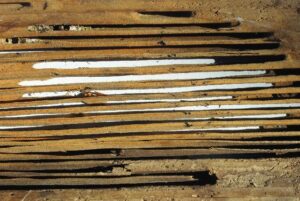
A closeup of carpenter ant created galleries. Credit: Nwbeeson |
|

Carpenter ants in a tree Credit: NaCl58 |
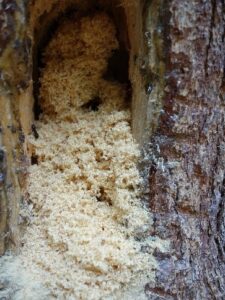
Sawdust like shavings from ants Credit: NaCl58 |
Biting People
- Carpenter ants bite when their nests are disturbed,
- The bite can be painful and potentially break the skin, this is because of their large size and powerful mandibles.

